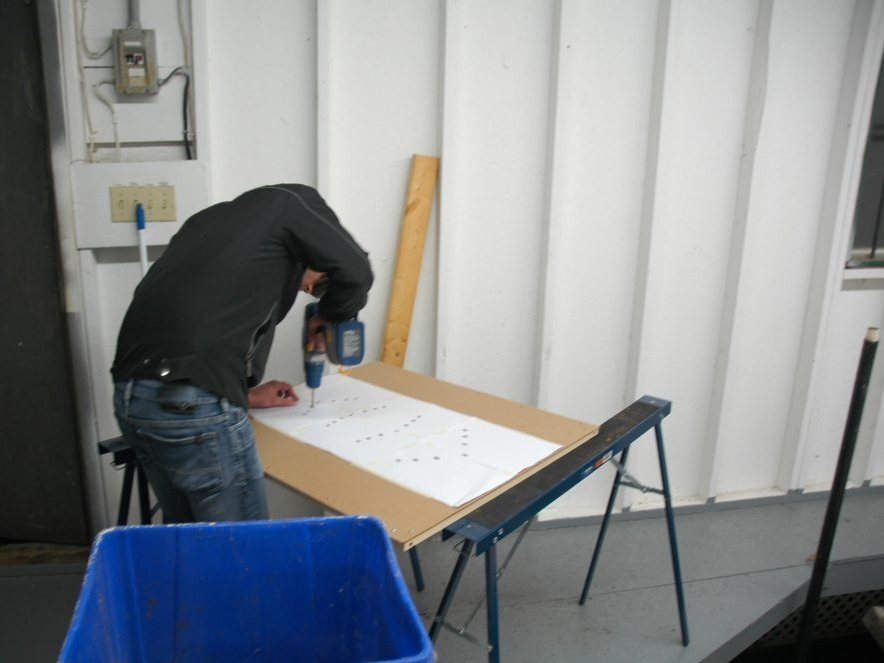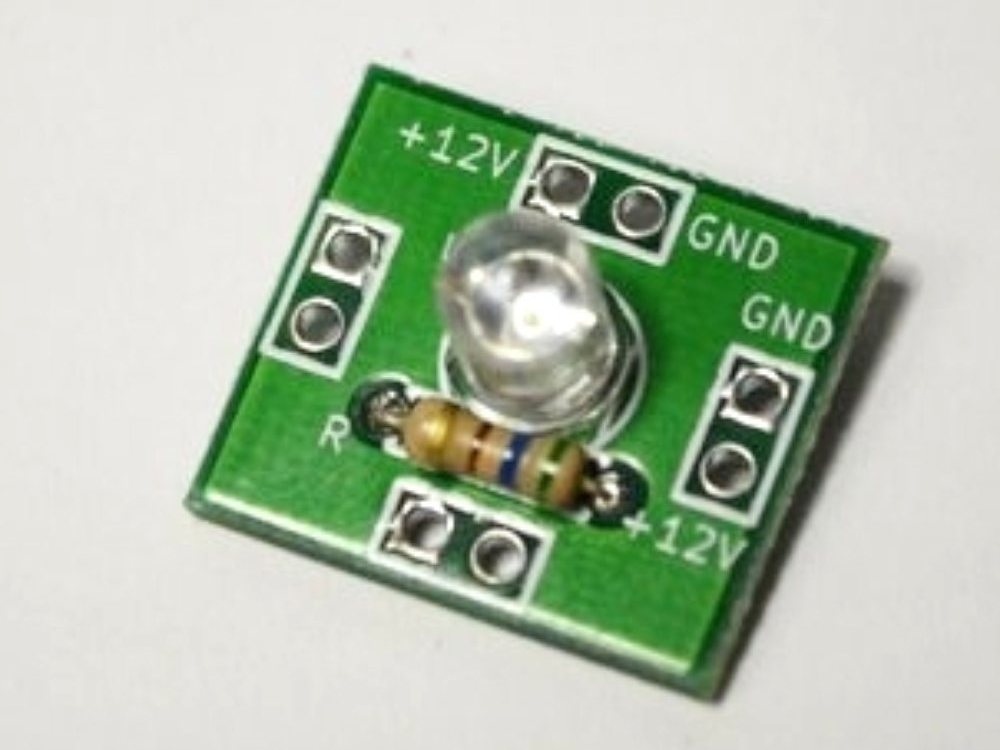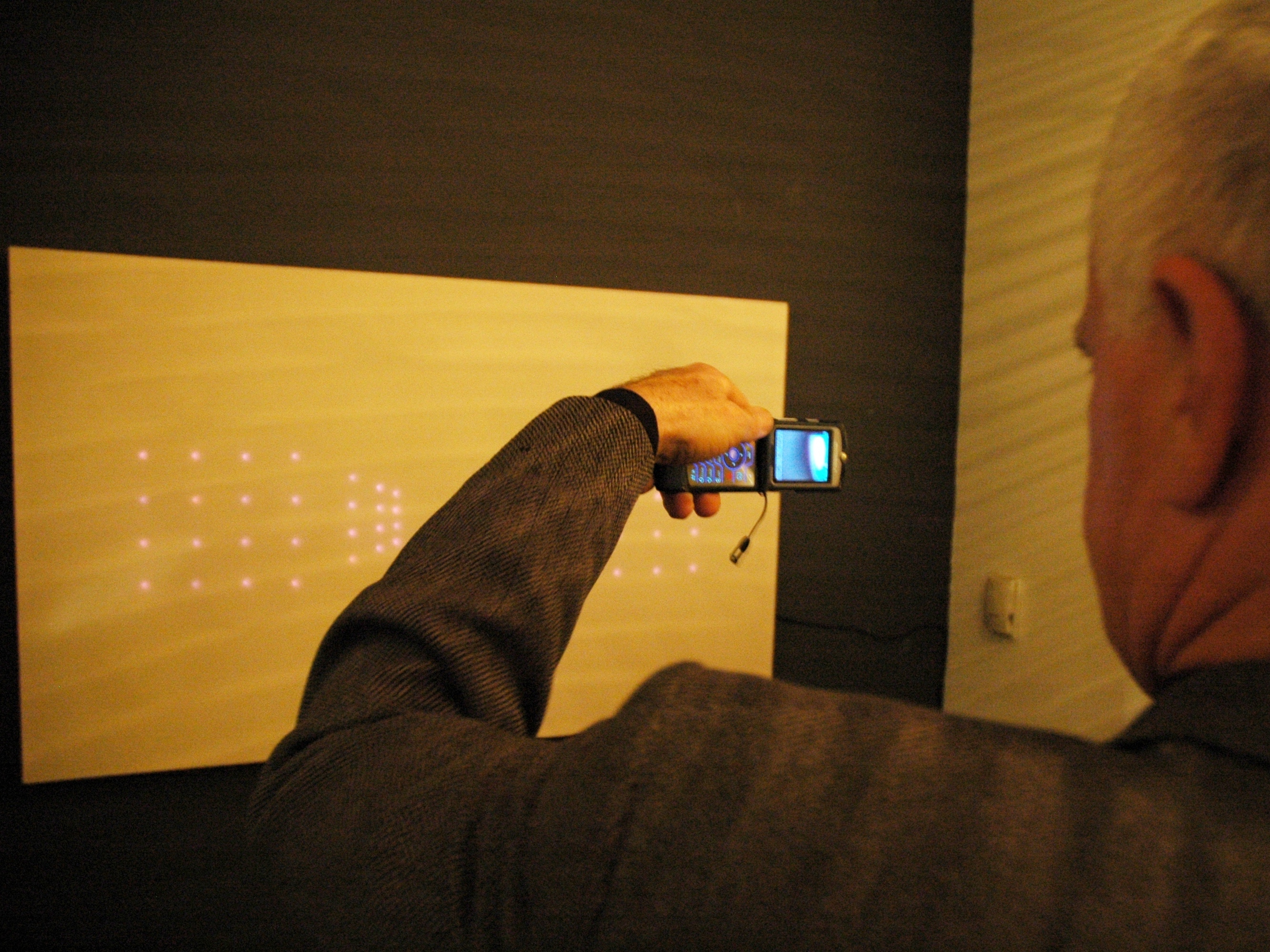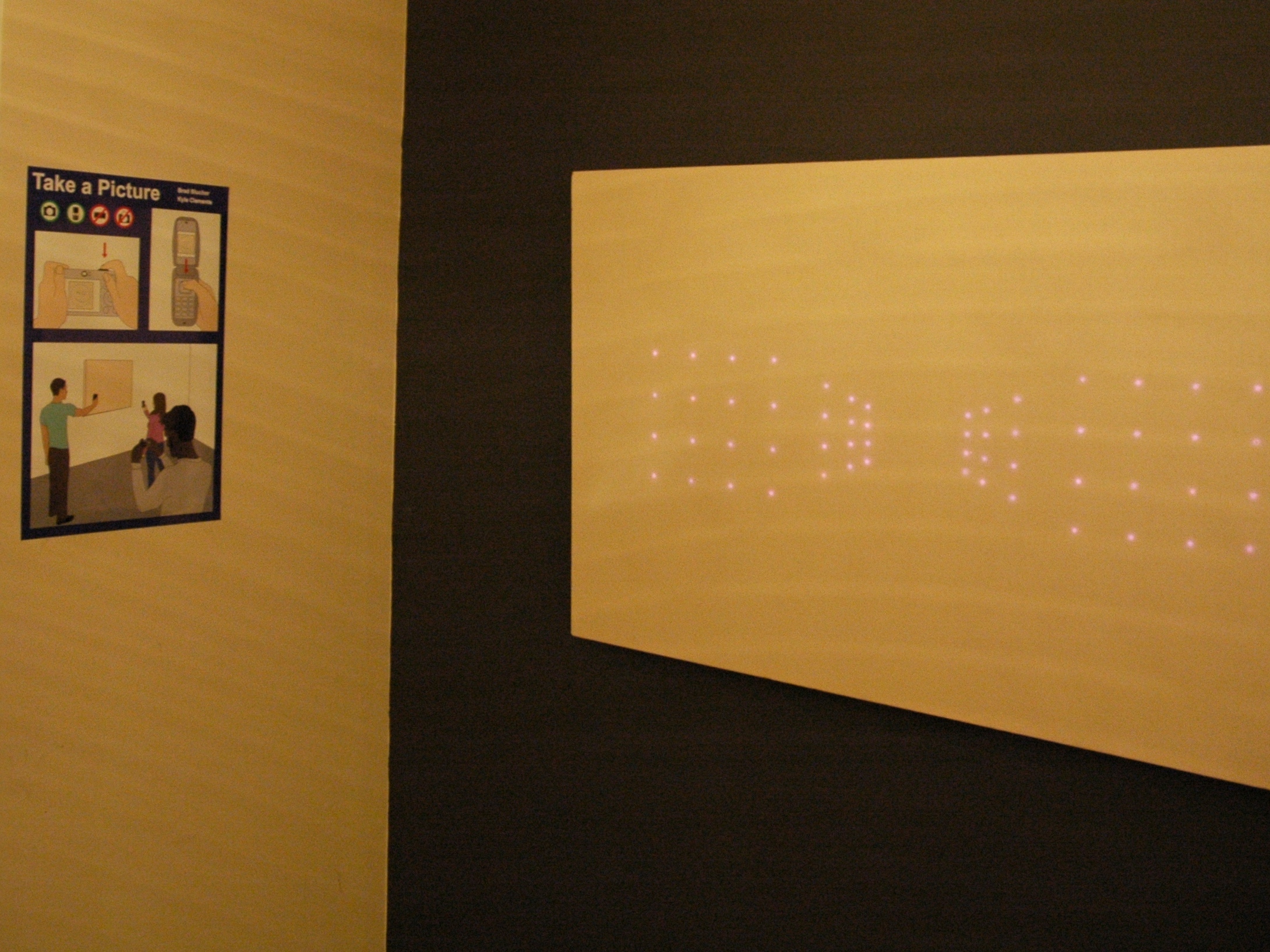Take a picture is a fine-art project by artists Brad Blucher and Kyle Clements. In the exhibit, the human eye see is only able to see blank surfaces (in our case, blank canvases). People walk up to the show space and see blank canvases hanging on the wall. They see absolutely nothing, then make some nasty comments: “Those lazy, pretentious artists, thinking they can get away with doing absolutely nothing.”
What the audience is unable to see is the hidden maze of wires and circuits. IR LEDs behind the canvas are emitting light that their eyes can’t see, but a digital camera can. Holding a digital camera up to these seemingly blank canvases will reveal hidden images.
This project revolves around one single, extremely simple principle: IR light is visible to digital camera sensors, but invisible to the human eye.
This guide assumes that you are already familiar with woodworking, stretching canvas, designing and etching your own circuit boards, and working with basic electronics. Nothing in this guide is particularly difficult, but it does require a diverse skill set. It’s very good for the jack-of-all-trades-master-of-none type of person.
















